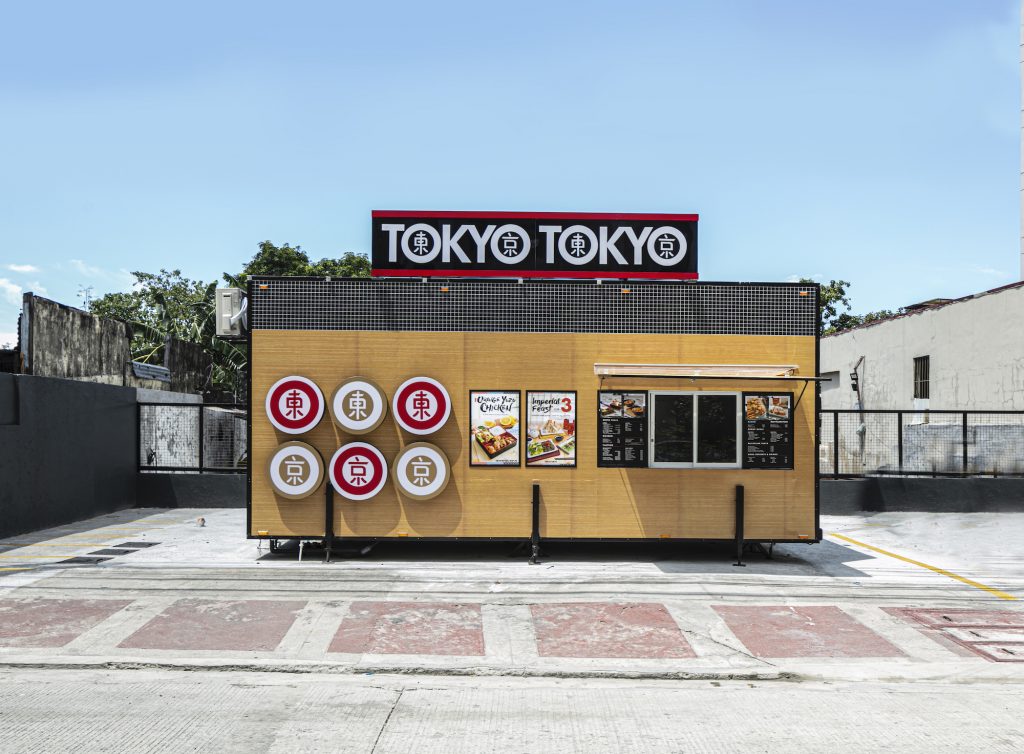As Metro Manila shifts to different degrees of community quarantine, its restaurants have been assigned the tedious, sometimes confusing, and hasty task of observing various dine-in restrictions. As of writing, NCR Plus is under general community quarantine with heightened restrictions, which means that restaurants can open al fresco up to 50 percent capacity and indoor dining to 20 percent capacity. You can imagine how crippling this can be especially if a large part of the restaurant is the experience and its interiors. One solution? Bringing the experience closer to customers through pop-ups and food trucks.
There is a satisfaction with discovering restaurants that are free from the enclosures of a mall. Architect Sonny Sunga of Jagnus Design Studio agrees: “We look forward to seeing more of this model flourish in different parts of the city. Not only will it bring more dining options to consumers but it may also spark renewed interest in improving the quality of our urban outdoor spaces. If this trend becomes a lifestyle, we will see developers and planners prioritize the expansion of the public realm dedicated to outdoor leisure and enjoyment.”
Express yourself


Tokyo Tokyo, a popular Japanese fast casual restaurant in the Philippines, put up their first “lifestyle design” restaurant back in 2018. The brand wanted the lifestyle store to allow its customers’ visits to be more experiential. Today, Tokyo Tokyo is able to ply the pandemic by growing its delivery and takeout business through its website, new aggregator partnerships, and its new Express stores that resemble shipping containers.
“Our Tokyo Tokyo Express stores were indeed a result of this pandemic,” says general manager Natalie Perez. “Our business prior to the pandemic relied heavily on dine-in sales, which were largely impacted by the quarantine restrictions. We had to quickly pivot in order to survive and eventually thrive amid the constant changes and limitations.”
Tokyo Tokyo Express stores are positioned outside malls, allowing them to be more accessible to customers. “We also carefully considered the store’s look. The design of the mobile store is unique to Tokyo Tokyo and is inspired by our existing lifestyle design restaurants, using Japanese-inspired materials and modern renditions of our brand colors and icons,” Perez elaborates.
Startup-friendly
A mobile store can definitely be friendly for startups. Some designs take less capital than a regular brick and mortar. For Claire Quinan, owner of MexiKanto Food Truck in Fairview, it was the perfect way to put a physical storefront for her birria tacos. “When the pandemic started last year, I had to resign from my job since I had a hard time going to the office—and they didn’t allow me to work from home. So I started selling birria tacos online. It was when we noticed an abandoned container van near our street that I thought about putting up a physical restaurant. We bought it, painted, and repaired it. We put wheels on it so it can be pulled,” Quinan says.
Her version of the birria taco comes in beef or chicken and is accompanied by a savory consommé that you can dip the crunchy tacos in. She has targeted community groups on Facebook to spread the word on her tacos and has since opened two other locations in Quezon City.
Quick pit stop
Even before the pandemic started, Krispy Kreme saw the value in takeaways. “Krispy Kreme opened its first ever container-van type of store model on Sept. 13, 2018 in Shell Balagtas. These types of stores are placed in key locations, specifically in gas stations, allowing our guests to have a quick ‘pit stop’,” says Ysabel Cruz, marketing manager of Krispy Kreme.
According to Cruz, these types of stores are 20 to 30 percent more cost-efficient to build and are easier to construct compared with the brick-and-mortar models. Should the company or franchisee wish to relocate, the container van store can be moved to a different location. Since this model can be fabricated offsite, the company can have lower rent costs until it is time for opening.
A food truck by the lake
When Fourth Barleta resigned as an art director in the advertising industry, he wanted to help his friend Joel Macatangay (owner of the main restaurant Babas Mediterranean Grill in San Pablo, Laguna) expand his business. “After days of brainstorming, we came up with the solution on how to bring Babas to the people since people couldn’t go out. The idea of Babas Street Food Truck was born.”
The food truck occasionally makes deliveries around the San Pablo area with a minimum order, but their main spot is by the scenic Sampaloc Lake. “People loved our spot since it’s an open area. They feel safer since it’s not an enclosed space,” Barleta says.
Babas Street is built on a Piaggio Ape, a three-wheeled commercial vehicle, and mimics the main restaurant’s arched front door for coherence. “Picking the model of the food truck was critical. The Piaggio Ape was our best option since it’s basically based on old models in Europe. So it added that vintage classic touch to our truck.”

